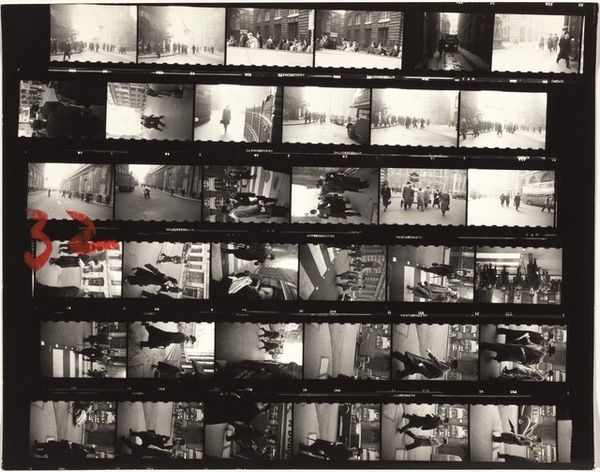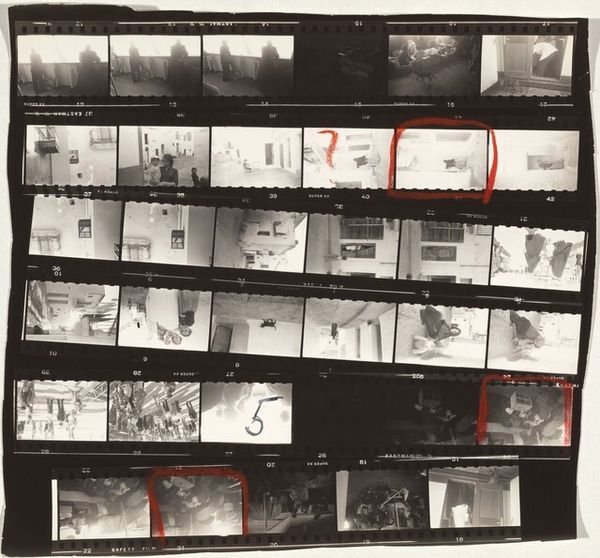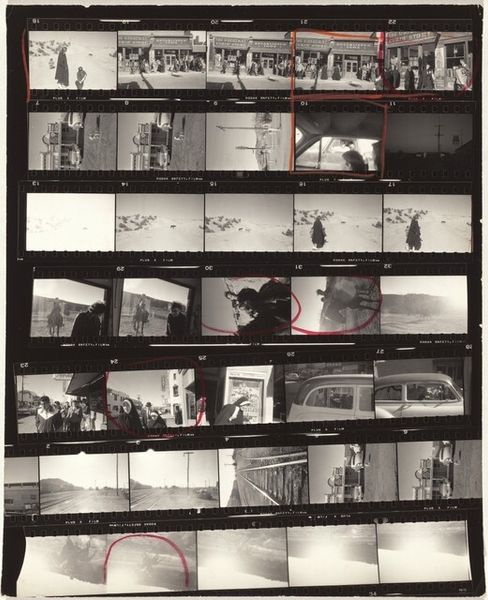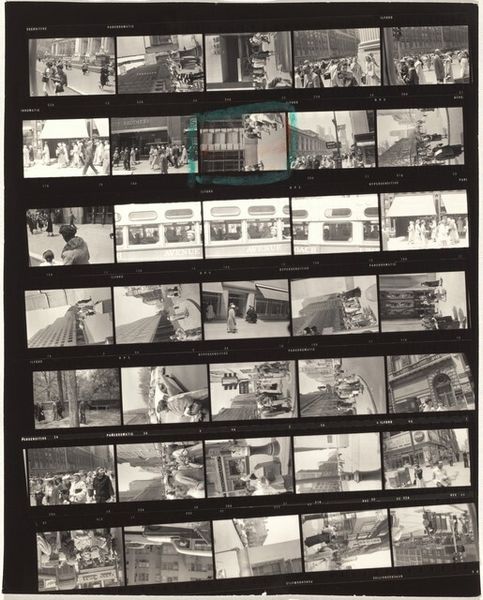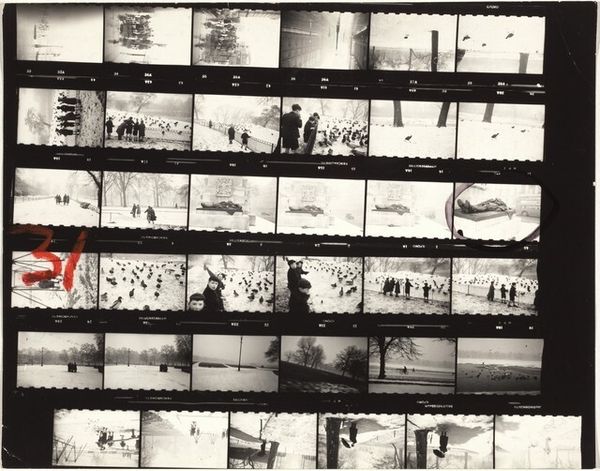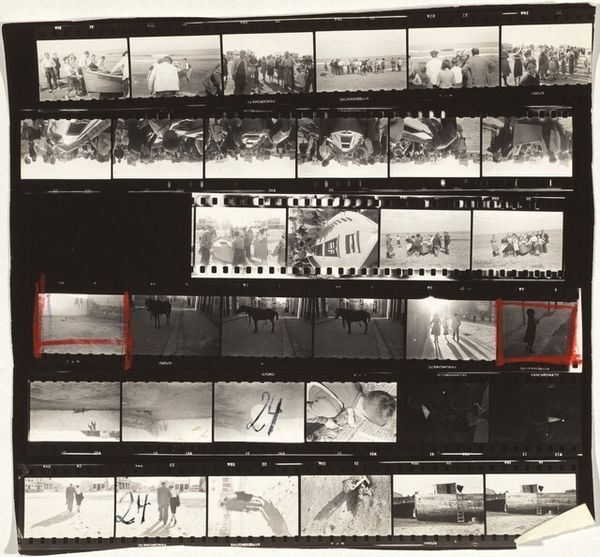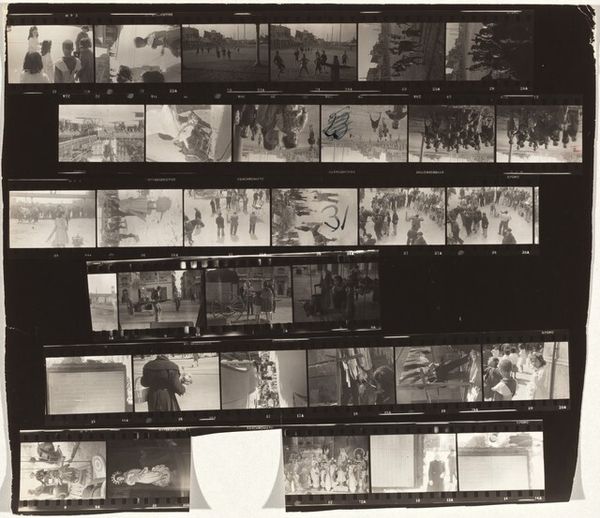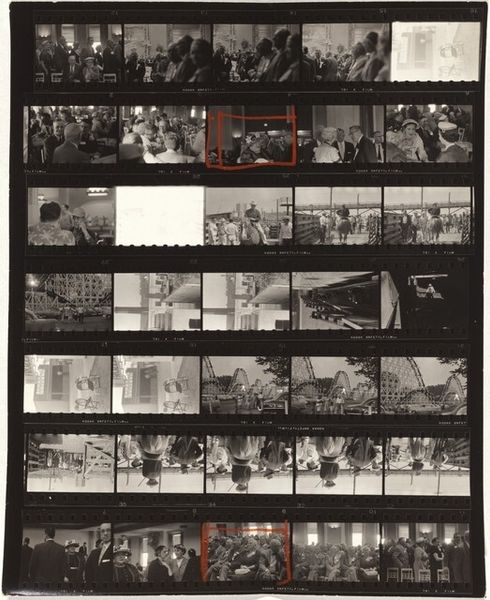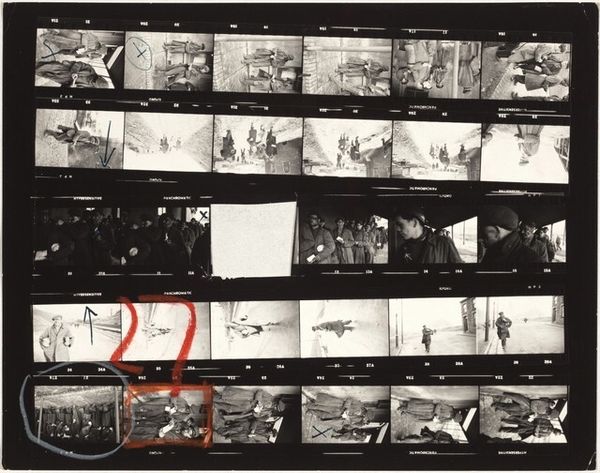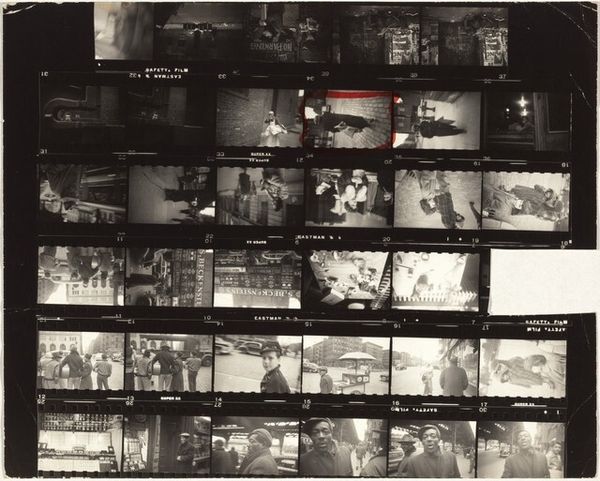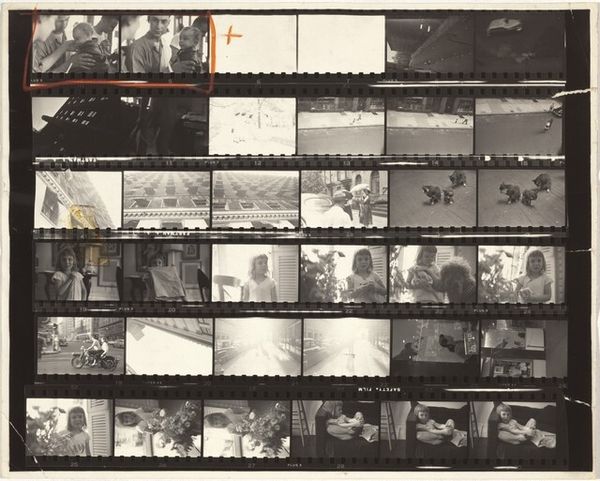
Dimensions: overall: 20.3 x 25.7 cm (8 x 10 1/8 in.)
Copyright: National Gallery of Art: CC0 1.0
Editor: This is Robert Frank's "Buckingham Palace--London 24," created between 1952 and 1953. It's a gelatin silver print, presented as a contact sheet. Seeing all these frames together like this feels very raw and immediate. What draws your eye when you look at it? Curator: I'm struck by how the material presentation itself becomes part of the artwork. This isn't a polished, idealized image; it's a working document. Frank leaves in the traces of the photographic process itself – the sprocket holes, the frame numbers, even what seems to be handwritten markings. It's about demystifying the artistic process. Editor: So, instead of just a finished product, we see the artist's… labor? Curator: Precisely! It's about the act of making. We see the contingency of the street photographer, capturing moments from a specific social stratum during a period of postwar rebuilding, where British identity was intensely debated. Notice how the rigid formality of Buckingham Palace contrasts sharply with the unposed citizens gathered nearby. Editor: The juxtaposition between the palace and the crowds. Curator: Exactly, Frank isn't just capturing images; he's recording the materials and the mechanisms of cultural representation, its rituals and labor. Do you see this as a deliberate decision from the artist to present it as such? Editor: That makes me think about how easy it is today to forget how photographs were made. Seeing this reminds me it was a physical, material process, involving labor and choices about selection. It certainly changes my perspective. Curator: Right? This is what art can be—not just what we see in the final image, but the process and materials that create meaning too.
Comments
No comments
Be the first to comment and join the conversation on the ultimate creative platform.
